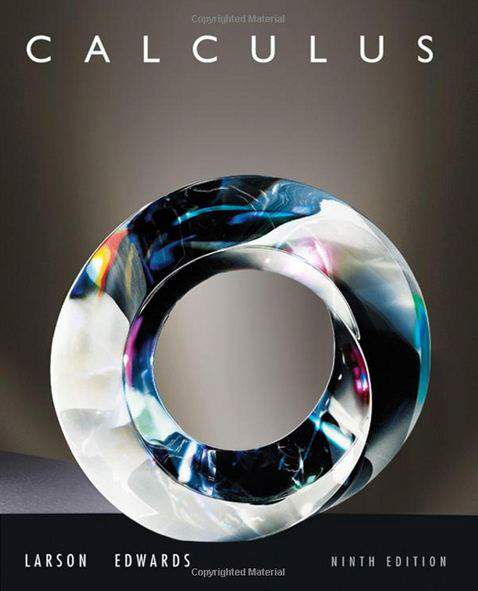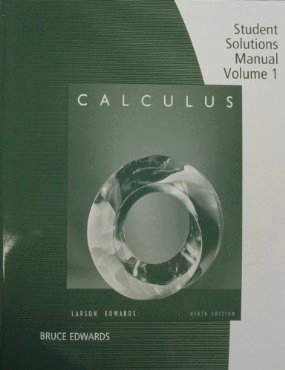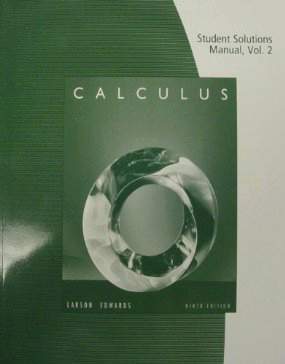Connecting...

This is a quick preview of the lesson. For full access, please Log In or Sign up.
For more information, please see full course syllabus of College Calculus: Level II
For more information, please see full course syllabus of College Calculus: Level II
College Calculus: Level II Partial Fractions
Lecture Description
In this tutorial we are going to learn about Partial Fractions. Partial fractions is a technique used to solve integrals but it is really grounded in algebra. So, we are going to be doing a lot of algebra and not that much integration. The point of partial fractions is to solve integrals where we have something like one polynomial, or maybe just a constant, divided by another polynomial. What we are going to do is factor the denominator polynomial and then we will do some algebra to separate this fraction into other pieces, into simpler fractions that are supposed to be easier to integrate.
Bookmark & Share
Embed
Share this knowledge with your friends!
Copy & Paste this embed code into your website’s HTML
Please ensure that your website editor is in text mode when you paste the code.(In Wordpress, the mode button is on the top right corner.)
×
Since this lesson is not free, only the preview will appear on your website.
- - Allow users to view the embedded video in full-size.
Next Lecture
Previous Lecture










































 Answer Engine
Answer Engine

 .
.





1 answer
Wed May 29, 2024 1:37 PM
Post by Nana kwame Afreh sika on May 18, 2024
Also here i have trouble playing the video of example 4
1 answer
Sat Jan 6, 2018 6:25 PM
Post by Sander Raes on January 3, 2018
I cannot see the additional examples, when i click on them i do see the integral itself but there is no video, also in the left box with the topics (example 2, lecture example 3...) there are no minutes next to the additional lectures. don't know or this is only me
3 answers
Mon Sep 5, 2016 9:46 AM
Post by Peter Ke on July 27, 2016
For example 3, just a curious question what happens if you square the x-3 under the A? So it will be A/(x-3)^2? Will you still get the same answer?
1 answer
Thu Aug 13, 2015 8:51 PM
Post by Micheal Bingham on July 31, 2015
How do we know whether to use partial fractions or to complete the square? For the first question I used the method for completing the square and used a trigonometric substitution and came to a completely different answer.
3 answers
Tue Feb 11, 2014 4:07 PM
Post by Angela Patrick on January 27, 2014
professor could you contact educator and correct some of the practice questions. On one the the answer is simplified incorrectly and on another they say 6=4b so b=2/3
1 answer
Mon Oct 21, 2013 8:02 PM
Post by Ana Moga on October 20, 2013
Thanks for the great lectures ...you are an amazing Prof.
I have a quick naive request: do you mind clarifying how do you get (x+2)^2 +1 from x^2+4x+5 (example IV- minute 4:35) :) thank you very much for your time and help
1 answer
Fri Jul 5, 2013 9:07 AM
Post by William Dawson on June 25, 2013
The algebra is definitely the hardest part, and it's always good to show it if it involves any significant rearrangement. There is nothing 'elementary' about algebra at this level either, whatever some _____ might say in the responses, in trying to be cute.
2 answers
Mon May 13, 2013 10:42 AM
Post by Megan Kell on February 16, 2012
When he moved from (A+B)x = 5x and -4A-2B = -16 to A+B = 5 and -4A-2B = 16, he forgot the negative sign on the 16. Is this correct, or am I missing something?
1 answer
Mon May 13, 2013 10:38 AM
Post by Kathy Hodge on November 7, 2011
For drill problems on Integration by Parts and other integration techniques, go to
http://archives.math.utk.edu/visual.calculus/4/index.html
However, they don't go into this topic in as much depth -- or as many types of denominators as Professor Murray.
1 answer
Mon May 13, 2013 10:34 AM
Post by ahmed hassan on May 1, 2011
You can skip all the steps and give us the answer!!
1 answer
Mon May 13, 2013 10:29 AM
Post by Daniel Brook on February 21, 2011
Thanks professor, your algebraic technique of sperating A and B was different from the way I learned in class and it was really helpful.
1 answer
Mon May 13, 2013 10:24 AM
Post by James Reaper on February 27, 2010
In example 2 the negative sign wasn't carried through or dropped by dividing by -1.
2 answers
Sun Sep 9, 2012 9:02 PM
Post by lynette stevenson on February 16, 2010
excellent professor, however he skipped steps he should explain the algerbra in more detail